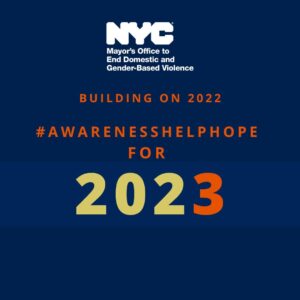Combating New York CityŌĆÖs Literacy Challenge: A Comprehensive Approach for Lasting Impact
Understanding the Foundations of Early Literacy Struggles
New York City faces a pressing literacy dilemma that jeopardizes the academic and social futures of its youth, especially within marginalized communities. Despite significant investments and numerous programs, reading proficiency remains distressingly low. To effectively tackle this issue, it is essential to delve into the underlying causes that hinder early literacy development. These include limited availability of quality pre-kindergarten education, economic hardships, and insufficient family involvement in literacy activities.
Addressing these challenges requires more than simply increasing reading time; it demands cultivating language-rich environments, empowering caregivers with literacy resources, and equipping early childhood educators with specialized training to identify and support diverse learning needs.
- Universal Access to Quality Early Education: Expanding affordable, high-caliber pre-K programs establishes a critical foundation for literacy growth.
- Community Collaboration: Engaging libraries, healthcare providers, and nonprofit organizations creates a network of support that enhances family literacy.
- Ongoing Educator Training: Providing early educators with research-backed literacy instruction techniques ensures personalized and effective teaching.
- Family Literacy Engagement: Initiatives that involve parents and caregivers in literacy practices reinforce learning beyond the classroom.
| Challenge | Effect on Literacy | Recommended Intervention |
|---|---|---|
| Economic Disparities | Restricted access to books and enriching language experiences | Community-based affordable literacy programs |
| Inadequate Early Educator Preparation | Missed chances for early literacy support | Compulsory literacy-focused professional development |
| Limited Parental Participation | Weakened reinforcement of reading skills at home | Workshops and resource provision for families |
Schools and Community Initiatives: Partners in Closing the Literacy Divide
Closing the literacy gap demands a united front where educational institutions and community organizations collaborate to support learners. Schools play a pivotal role by delivering targeted reading programs tailored to diverse student needs. Complementing this, community initiatives offer tutoring, literacy workshops, and family engagement activities that extend learning opportunities beyond school hours.
Such partnerships foster a continuous learning environment, nurturing a lifelong passion for reading. Additionally, these collaborations help mitigate socioeconomic obstacles by providing free books, mentoring, and digital literacy tools, ensuring equitable access for all children.
| Initiative | Benefit | Illustrative Example |
|---|---|---|
| Focused Reading Support | Enhances decoding and comprehension abilities | Small-group instruction within schools |
| Community-Based Tutoring | Offers individualized assistance outside school | Volunteer-led after-school tutoring programs |
| Family Literacy Engagement | Involves parents in fostering reading development | Interactive weekend literacy workshops |
| Resource Accessibility | Expands availability of reading materials | Partnerships with local libraries and book drives |
Harnessing Technology and Analytics to Enhance Literacy Outcomes
The integration of advanced technology and data analytics has transformed literacy education by enabling educators to monitor student progress with precision. Digital tools provide immediate feedback on reading skills, allowing teachers to customize instruction to each learnerŌĆÖs pace and challenges. This personalized approach addresses literacy gaps more effectively and supports continuous improvement.
Benefits of leveraging technology include:
- Real-Time Feedback: Enables educators to adapt teaching strategies promptly.
- Data Visualization Dashboards: Identify trends and flag students needing additional support early.
- Collaborative Platforms: Facilitate communication among teachers, parents, and specialists to coordinate interventions.
| Technology Tool | Effect on Literacy | Example Application |
|---|---|---|
| Adaptive Reading Programs | Adjust reading difficulty to individual skill levels | Raz-Kids |
| Progress Tracking Dashboards | Visualize student mastery over time | Seesaw Analytics |
| Automated Literacy Assessments | Accelerate evaluation of reading competencies | STAR Reading |
Essential Policy Reforms to Sustain Literacy Progress
Resolving New York CityŌĆÖs literacy crisis extends beyond classroom efforts and necessitates comprehensive policy reforms. Lawmakers must ensure consistent funding dedicated to evidence-based literacy initiatives, enabling schools to maintain and expand successful programs without financial uncertainty. Furthermore, state education authorities should require ongoing professional development focused on innovative literacy teaching methods, recognizing that well-prepared educators are key to student achievement.
Implementing statewide data systems to monitor literacy from kindergarten through third grade is also critical. Such systems provide actionable insights, allowing educators to intervene early and prevent students from falling behind. These reforms not only promote literacy growth but also work toward closing racial and economic achievement disparities, fostering a fairer educational environment.
- Stable Funding Streams: Guarantee program continuity and growth.
- Mandatory Educator Training: Equip teachers with cutting-edge literacy strategies.
- Comprehensive Data Monitoring: Support timely, data-driven interventions.
- Equity-Centered Policies: Address systemic barriers contributing to achievement gaps.
| Policy Area | Anticipated Outcome | Projected Timeline |
|---|---|---|
| Consistent Literacy Funding | Long-term program viability | Within 12 months |
| Teacher Professional Growth | Enhanced instructional quality | Annual ongoing |
| Literacy Progress Tracking | Early detection of learning challenges | Within 24 months |
| Equity-Focused Initiatives | Reduction in achievement disparities | Immediate and continuous |
Conclusion: A Unified Path Forward for Literacy Advancement
Addressing the literacy challenges in New York City demands a multifaceted strategy grounded in proven methods and collaborative action. By uniting educators, policymakers, families, and community organizations around data-driven, equitable literacy programs, the city can reverse declining reading proficiency rates. The ultimate goal is to ensure every child gains access to high-quality literacy education, empowering them to thrive academically and beyond in an increasingly complex world.













